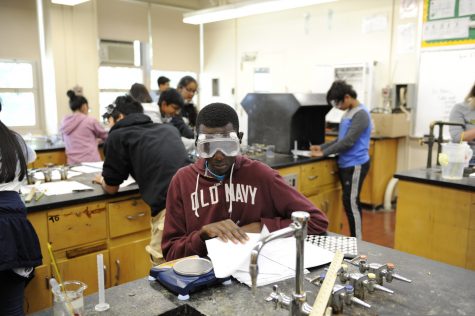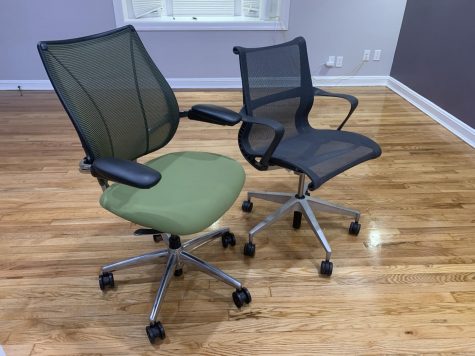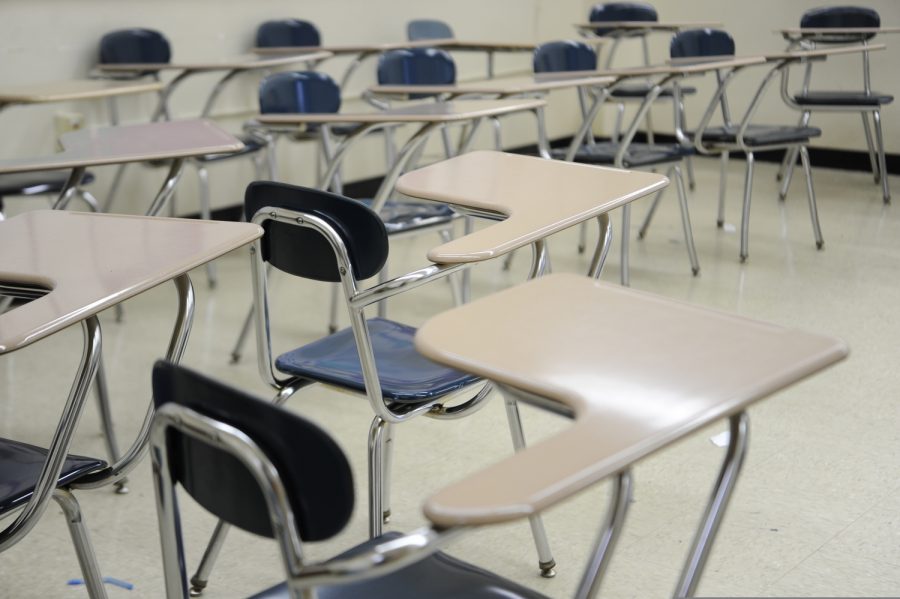Workspace Ergonomics
A fixture of the typical classroom in Bronx Science, the school desk’s unique design provides an added level of convenience for the user.
In the pursuit of excellence, many Bronx Science students diligently complete mountains of work assigned to them by their teachers. Despite spending most of their time thinking about the work they do, it may be more beneficial for them to take a break and think instead about how they work. Although Bronx Science students have created a strong set of study skills and techniques, they often neglect the fact that the way one’s workspace is arranged plays a major role in one’s productivity and comfort. In the midst of a digital age, learning how to create effective spaces for work has become even more important, as technology has a track record of imposing negative effects on productivity.
A standard workspace is comprised of two basic elements. “All you need is a table and chair to work,” said Justin Jou ‘20. These facets are longstanding staples of the modern concept of an office and of a school, but constant improvements in their design are bound to improve one’s work experience. At Bronx Science, a student’s workspace is often defined by her desk, comprised of an attached table and seat.
This is a configuration that is unique to schools, as both the seat and desk are combined into one fixture. “I like that the table and chair are connected, and I think that it is convenient and practical,” said Jessica Alonso ‘21. Yet that convenience comes with some limitations, however, as it is not a universal solution for all students. “The design is only bad if a right-handed person gets a left-handed desk, or vice-versa,” said Alonso. Though this is the most prevalent configuration at Bronx Science, there are other unique arrangements.
“All you need is a table and chair to work,” said Justin Jou ’20.
In the Chemistry wing, some of the workspaces have different designs that stray away from what is found in traditional classrooms. The island-style tables in the lab rooms feature gas valves for Bunsen burners and integrated hoods for fumes. Those tables also have integrated seating, which is comprised of a basic wood board that is pulled out of the island. That is a great design for efficient transitions between sitting and standing in a lab, yet there are some limitations due to its intended function. “The seats in the Chemistry labs are particularly uncomfortable,” said Daniel Khen ’22.

“The seats in the Chemistry labs are particularly uncomfortable,” said Daniel Khen ’22.
Technology is playing a greater role in our everyday lives and in many workspaces as well. There’s no doubt that technology has led to a new level of efficiency in the workspace, but among those benefits are some detriments as well. This is evident in the school library and in the research literacy labs, where one can find computers in use. Analyzing how the monitors are mounted emphasizes the importance of attention to detail for an effective workspace. Compared to the monitor mounting in the library, computers in the research literacy labs can result in more user fatigue, as one must bend their neck to view the screen, not to mention the fact that they cannot rearrange the viewing angle or options to enhance a workspace, such as designer furniture.

Designer chairs combine sleek aesthetics and comfort.
With companies that have spent millions of dollars on research and development of new products that integrate how people work, there are plenty of options for a good monitor mount. Options range from basic stands to complex hydraulic monitor arms – including those well over a thousand dollars. And for those who truly want an ergonomic setup, one can also get a chair ion that ranges as well. “It’s comfortable, and now I just want to sit all day,” said Harvey Kwong ’20 about his designer chair. Regardless of where you go to study next, perhaps thinking about how you work will be on the table.
Sanford James is an Editorial Editor for ‘The Science Survey’ and a Student Life Section Reporter for ‘The Observatory.’ Sanford believes...

